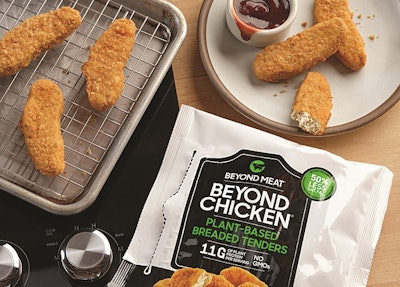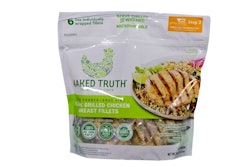
Consumers don’t want paint whiteners, laxatives or antifreeze on their plate.
The meat industry can make a winning argument against plant-based and alternative protein products by pointing out the ingredients used in the highly processed product, according to Richard Berman, president of Washington-based public relations firm Berman and Co. He spoke on Oct. 28, 2021 as part of the National Chicken Council’s (NCC) Annual Meeting in Washington.
Alternative proteins
Although vegetarian and vegan friendly options are already well established in the market, Berman said a wave of new investment is pushing ahead of plant-based and alternative protein products.
Today’s products are more competitive and, he said, represent an element of risk to the protein industry since their goal is to replace animal protein. Chicken is the top target for alternative proteins because of its broad acceptance.

Tipping point
Going on the offensive, he argued, protects the industry from the threat posed by alternative protein ventures. Alternative proteins are increasingly viewed as valid and acceptable by consumers. As the well-known and startup products appear on more menus at more major chains, it will only advertise the competing product to more potential buyers.
Berman said the time to make an argument against the product is now. If enough people try it and decide its safe, or good, to eat, then people will form opinions on it and possibly switch to a competing product. The end goal of the alternatives, he said, is to totally replace animal protein. The product is not going away, either. It’s position in the market will either grow or diminish, but it will not stay the same.
1. Nutrition
A key reason people are motivated to try an alternative protein product is a desire to eat healthier food.
Berman said the strongest argument against alternative proteins is they are, in fact, not as healthy as the foods they imitate. Chicken, and other meats, are essentially health foods in that they are high in protein, low in fat and usually not processed beyond harvest and packing. Alternative proteins are often high in fat, sodium and calories while containing multiple artificial ingredients.
Berman’s firm researched this issue heavily and so far consumers are not buying the health argument from the alternative protein companies, according to a focus group and survey research.
2. Ingredients
Consumers do not generally want to eat processed foods, instead they want natural foods, Berman said. Moreover, they don’t want products with additives especially those they do not understand.
Alternative proteins include ingredients like calcium chloride, titanium dioxide and methylcellulose. These industrial ingredients are used in small, non-toxic quantities but are nevertheless unpalatable.
“You just have to say, ‘Something is in there that I either can’t pronounce or I’ve never heard of,” Berman said. “That’s all somebody needs to hear.”
Real world results
Berman and Co. put together an advertising campaign in a relatively wealthy and politically liberal area of the country driving people to websites it constructed which used the nutrition and ingredients contentions against alternative proteins. In that study, it found opinions could be influenced by those arguments.
Separately, the firm conducted focus group research with people who tried alternative proteins and those who had not to see if and how either group’s opinion could be moved on the issue. So far, for the people who have not yet tried alternative proteins the chemical and preservative arguments are winners. Berman prefers this argument because most of the population has still not tried alternative proteins.
Right now, 30% of the population has tried alternative proteins once. That means the opportunity exists to influence most potential customers away from alternative proteins. Berman said going on the offensive is important since the industry usually operates from a position of defense where its hard to gain any ground.
McDonald’s: When consumers want McPlant, we’re ready WATTAgNet.com/articles/43856

















